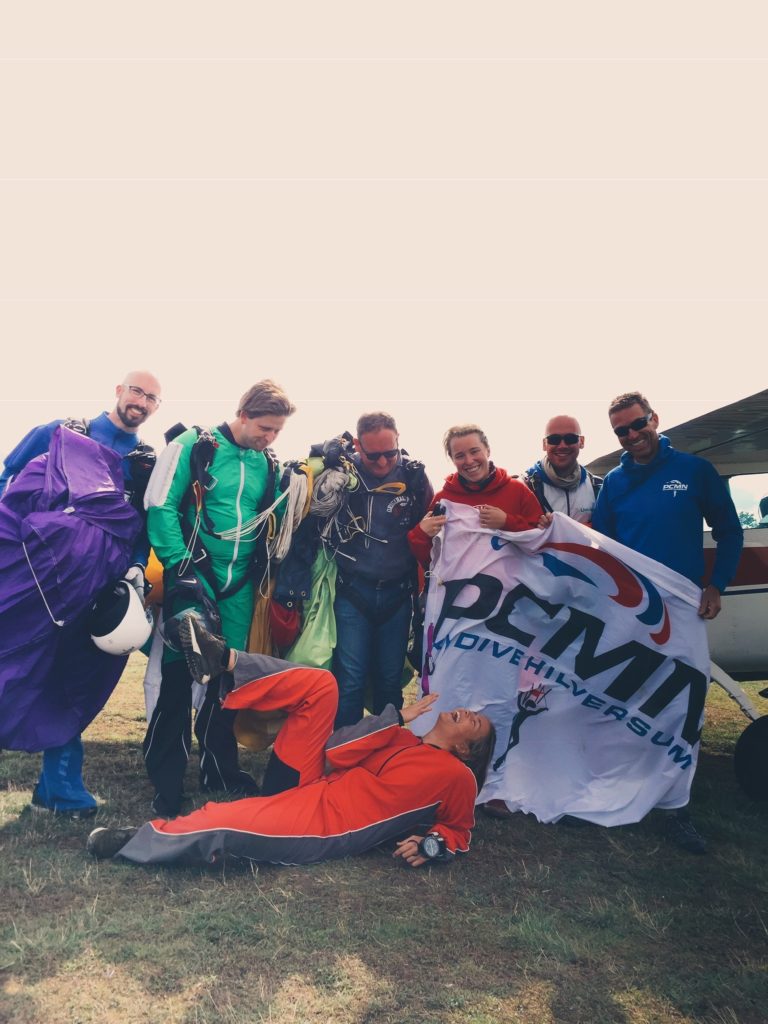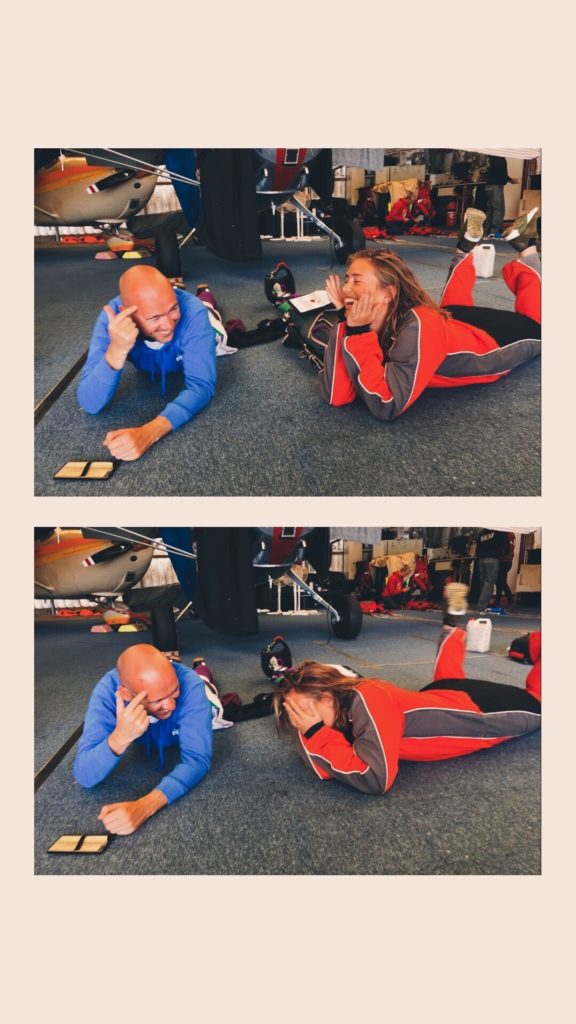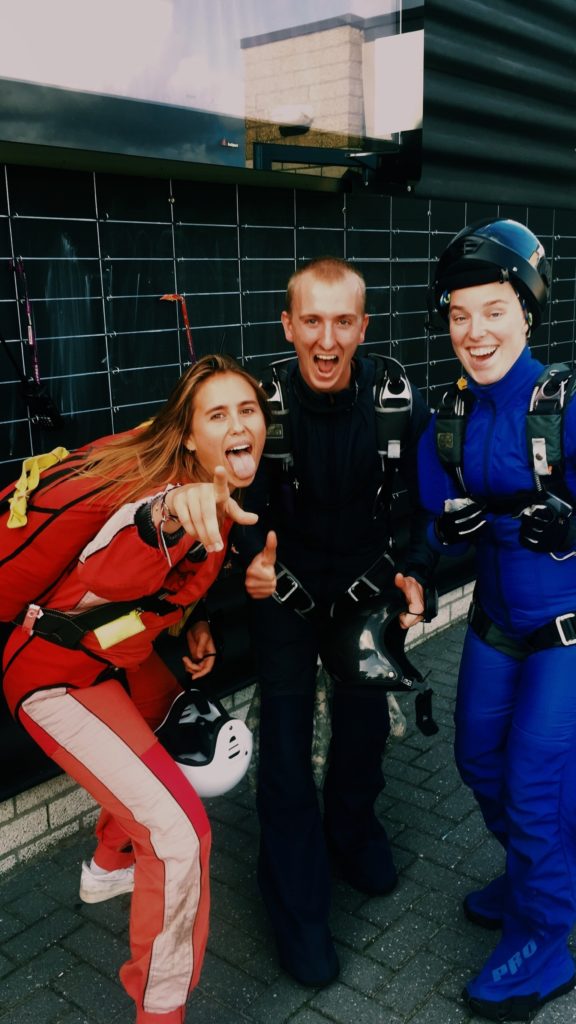Jumper-dumping, skydiver-driving, dropping happy bombs: whatever you may call it, being a skydive pilot is a whole lotta fun!
Whether you do it for the hour building or not, I truly think it’s a valuable training opportunity for becoming a better pilot.
They might say we fly like cowboys; taking off with heavy loads, and diving into a high speed descend after jump-run. But I think that learning about the limits of yourself, and the plane, significantly improves your overall flying skills.
Flying a jump-ship is a huge responsibility. You’ve got a bunch of wild passengers in the back, and you’re dealing with marginally safe conditions such as low speeds on jump-run, a moving C of G, and a bunch of free-falling obstacles on your way down! Don’t get me started about the static-line students. 😉
Taking up these responsibilities early on in your career is super beneficial. It might seem daunting at first: it definitely was for me, but I’ve learned so much from it. Whether you plan to enter the airline industry, or like me, want to be a bush pilot, this is a chance to become more comfortable as a pilot in command. Also, think of all the take-off’s and landings you can make in just ONE day! You’ll be a pro at precision landings in no time!
So how can YOU become a skydive pilot?

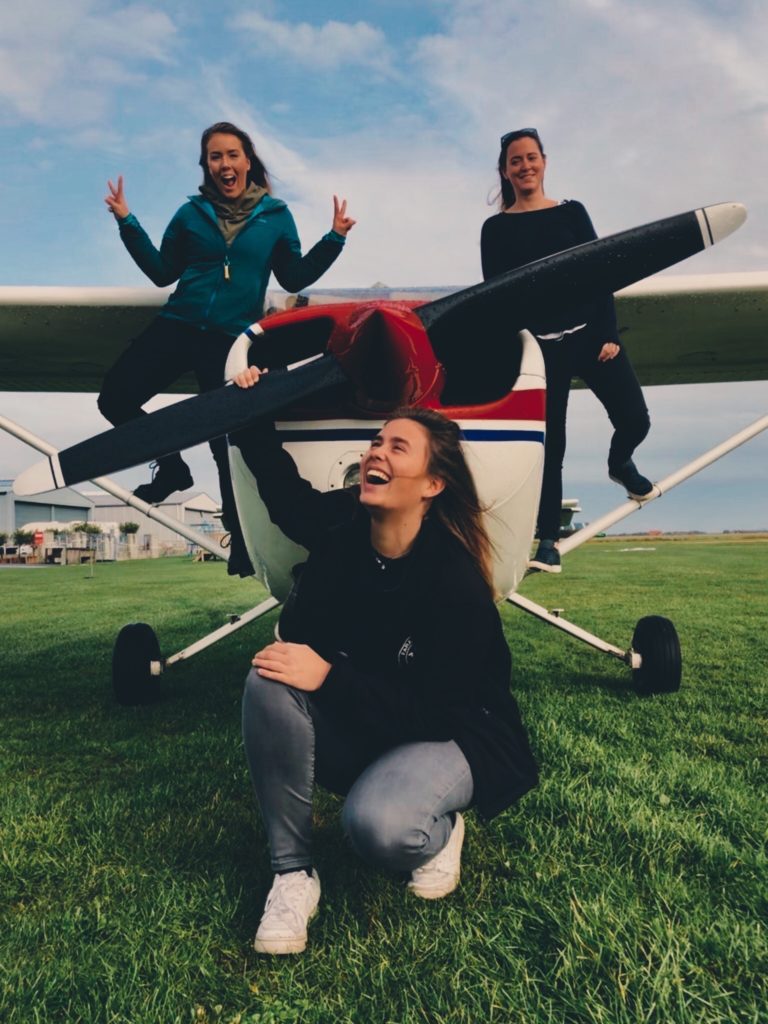
2019 All Girl Jumper Dumper Squad 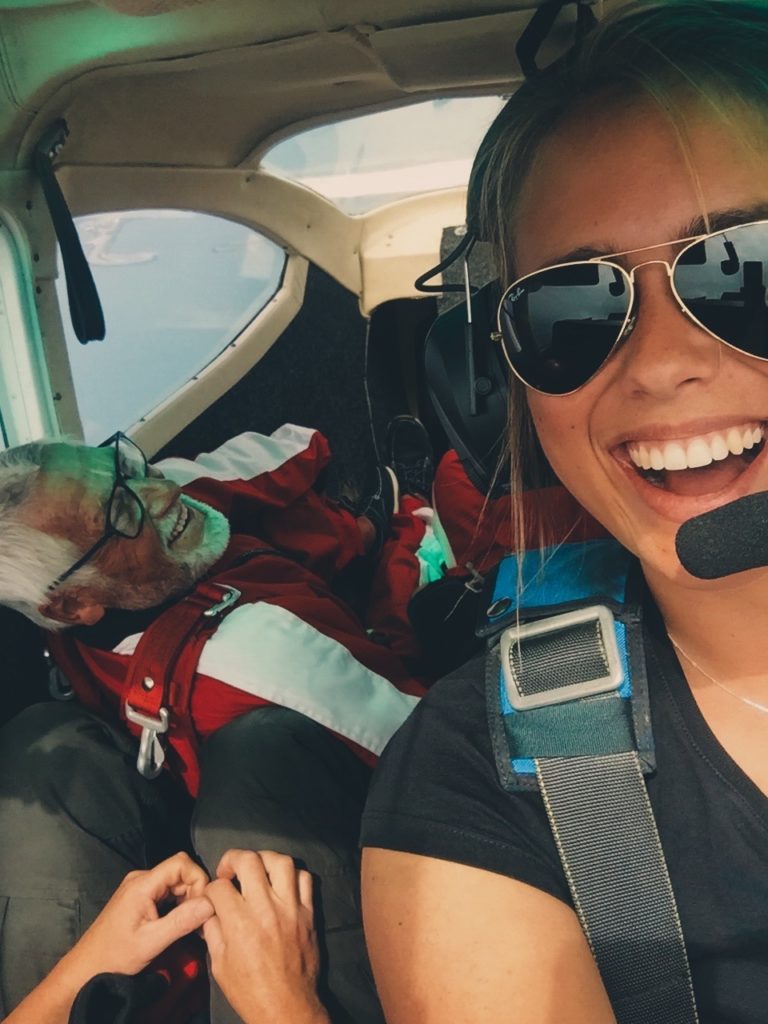
Kicking my Uncle out of the plane 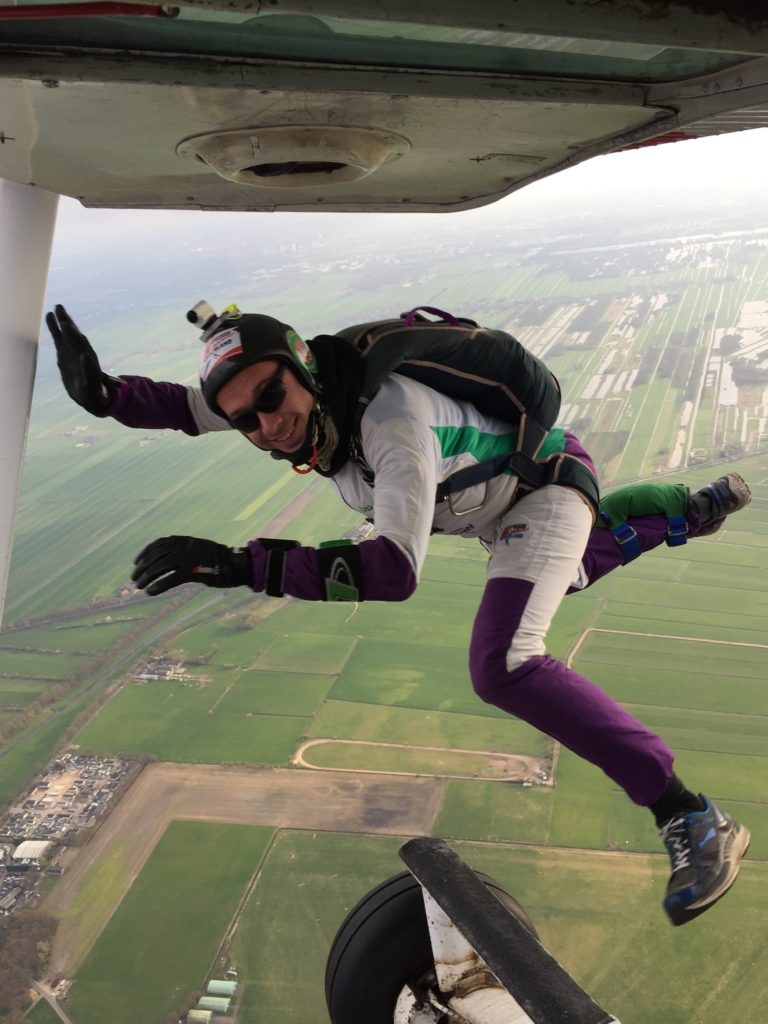
I can’t guarantee that the rules are the same in every country, so I’ll tell you my story and hopefully give some advice on how to continue your research.
I started dropping skydivers in the summer of 2018. I only had a PPL, but was studying for my ATPL subjects and was eager to build more hours. At my local airport there is a small skydive club and I knew they only had one plane, and a handful of pilots. But I thought to myself, why not ask if they’re looking for someone new… You never know!
Advice #1 ASK ASK ASK!
So, I gathered some courage and walked up to the open hangar. To the first person standing there, I asked “what does it take to fly here?”. The poor skydiver was a little overwhelmed, but kindly gave me the chief pilot’s number. I immediately called him and we planned a meeting for the next day.
Now here it gets a little tricky…
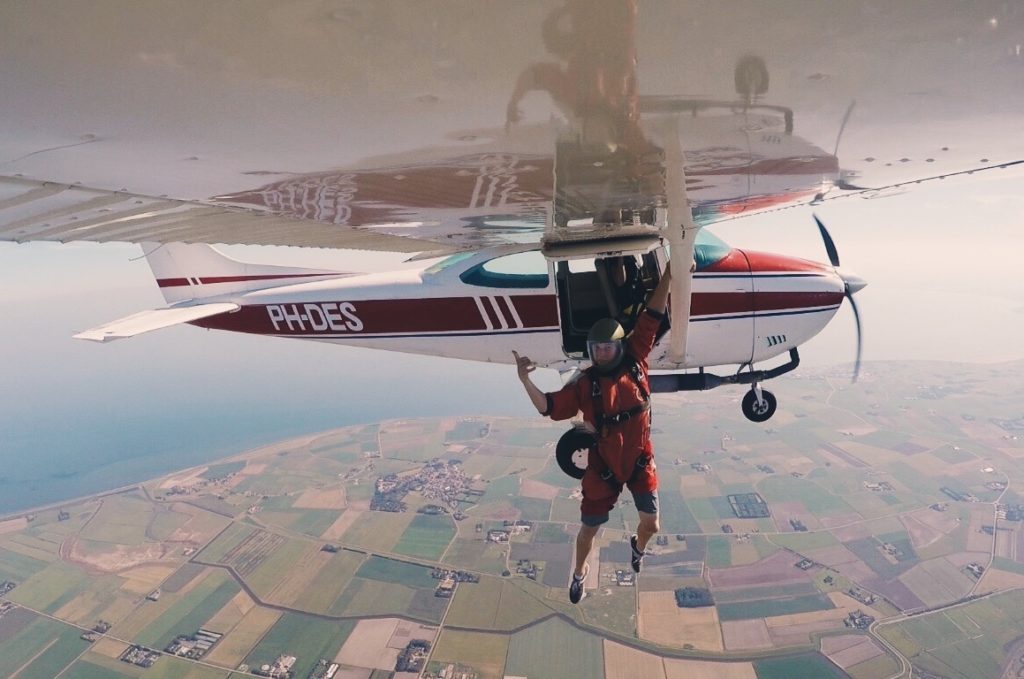
In most places, a skydive pilot must have a commercial license. The skydive center that I worked for is a CLUB. It has no profit motive (Aka no skydive jumps offered to ‘non-members’) and that’s why I was allowed to fly there on my PPL.
Again, my advice is to always ask! Call up your local dropzone, and see what their regulations are. Being allowed to drop skydivers on a PPL is very rare, so I can’t guarantee that this is an option for everyone. BUT, you never know, so informing about the possibilities is always a good idea.
As a CPL holder, however, you’re one step closer!
Most places ask a minimum experience of 350 hours TT.
Iekkk! This is not what you want to hear as a fresh commercial pilot!
This was the same for me. I wasn’t even close to this number (lets say just short of half…), and let alone with enough experience on a Cessna aircraft. So how did I land the job?
I showed perseverance. I explained what my aviation goals were, and how jumper-dumping would help me become a better pilot. The chief pilot was still wary of my flying skills and wanted me to first prove myself to one of the flight instructors. So the next day I flew with an instructor and worked my butt off to prove I was good enough.
That’s how I got the job.
The week after I had several training flights with the Chief Pilot and I learned the fine art of dropping happy bombs! From the basic climb out procedures, to timing a perfect turn onto jumprun, and finally; how to open a door mid-flight!
In that moment I realized there was a lot of space for personal improvement, and I was grateful for being given this opportunity to become a better pilot.
Now here’s a few things that I think helped me, and that I would recommend to anyone who is going through the struggle of making their first hours after getting their licence:
Build your aviation network
I must admit that in general aviation it’s all about who you know. I’d been walking around that airfield since I was 12. So they knew my passion for aviation was serious. If they know you’re motivated, there’s a bigger chance they’ll let you fly; even if you might not exactly meet all of the requirements.
If you’re new to it all, don’t worry! It’s never too late to build up some courage and introduce yourself to members of the flying club or skydive center! You never know what cool flying gigs these people might offer you!
Next is:
Educate yourself on the matter
If you’re seriously considering becoming a skydive pilot, then it’s important to know some basics about skydiving. You’ll be wearing a parachute on all your flights; it might be good to know how it works!
It’s also good to know what the dangers are of the job. What happens if a parachute opens in the aircraft? Or if one of your static-line students gets a hang-up?
It’s good to show that you know your stuff when you’re applying at a drop zone!
Besides all the fantastic flight experience you’ll gain from this, you’ll also become a part of an amazing skydive community. A bunch of wackos ”jumping out of a perfectly working airplane’’, just makes the whole experience better. You’ll make some great new friends along the way.
Lastly, here’s a few links to other skydive pilot stories, advice, and additional information that I think will help you!
https://www.skydivecsc.com/blog/jump-pilots-flying-skydivers
http://skydiverdriver.blogspot.com/p/what-in-world-is-jump-pilot-and-why.html
Seeya!


